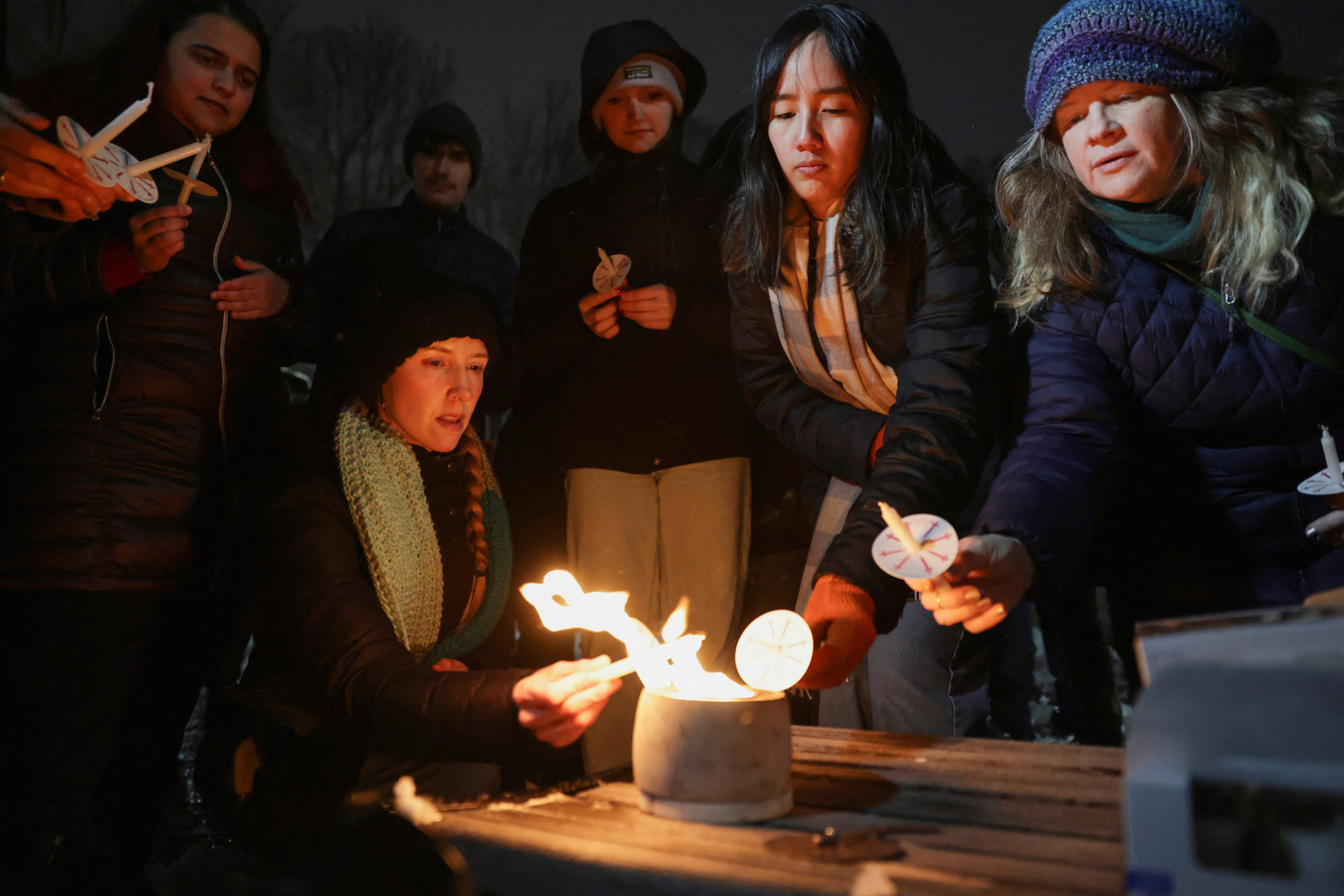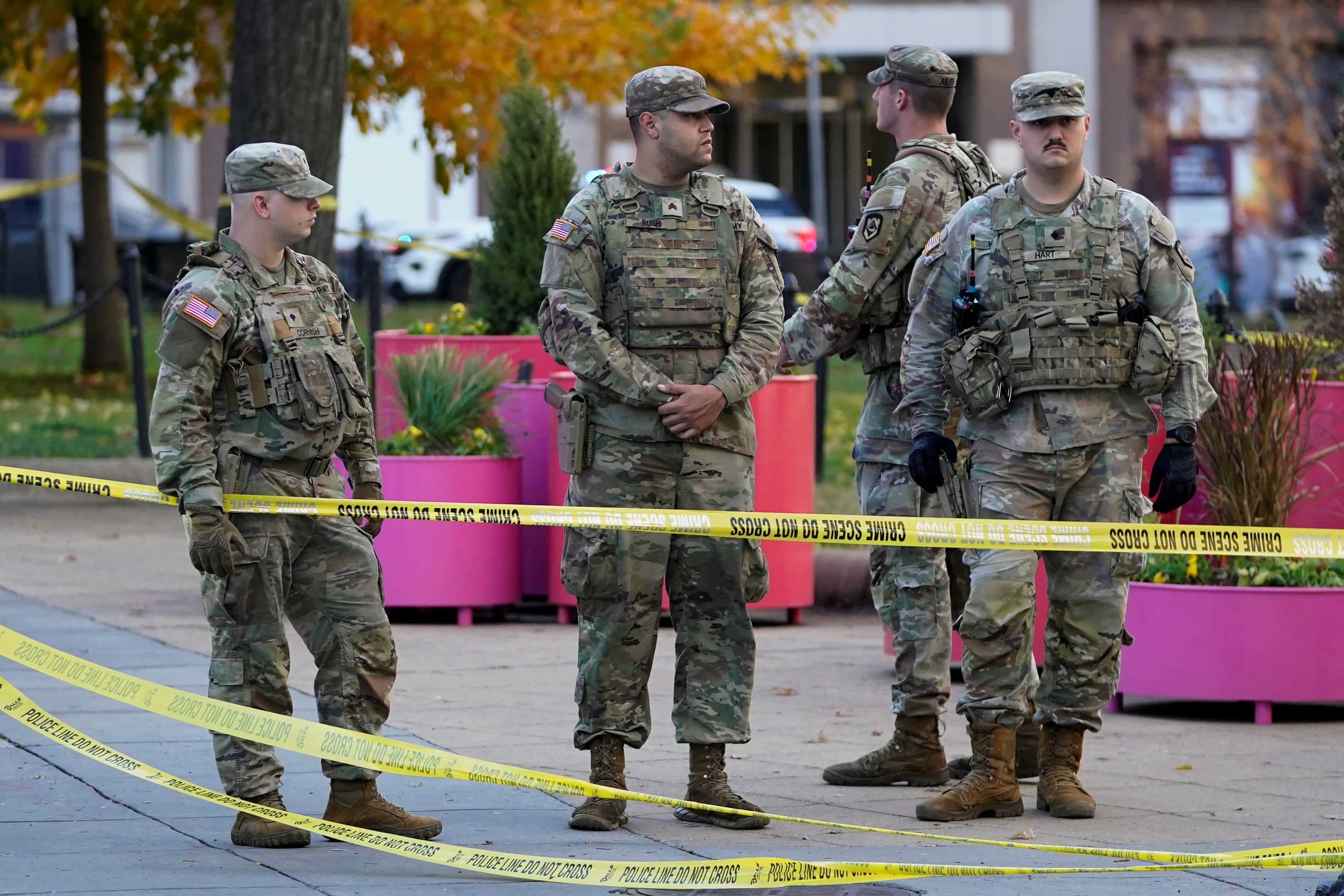Ministry helps congress attendees ‘encounter the face of the poor’ in Indy

Christ in the City, an organization based in Denver, seeks to meet the needs of homeless people for human connection
INDIANAPOLIS — July 18 was a sunny, mild day in Indianapolis. A woman sat quietly on a bench along North Meridian Street watching as people walked by. They didn’t speak to her, and she didn’t speak to them.
As Blake Brouillette, Megan Ferguson and Russ Hoffman stopped on the sidewalk in front of the woman, her dog protectively barked.
“Wow, that’s some guard dog you’ve got,” said Brouillette.
Then the woman came to life, engaging in a 20-minute conversation animated by her lively arm gestures and heartfelt laughter.
The encounter was part of an opportunity made possible by the Denver-based ministry Christ in the City, which seeks to meet the needs of homeless people for human connection. The ministry was present at the National Eucharistic Congress in Indianapolis on July 17-21, offering “street walk” opportunities for attendees to bring Christ’s love to the city’s homeless people.
“You can never know the impact of one encounter,” Brouilette, Christ in the City’s managing director, told Ferguson and Hoffman. “So, even if we don’t do anything, per se, being with someone like (the homeless woman) and showing them a moment of relationship — just a smile and a laugh together — might have changed their whole day.”
As the participants were split into small groups each with a Christ in the City staff member or missionary, some ground rules were explained: Stay together; offer your first name before asking theirs so as not to seem aggressive; don’t offer money, and if asked for money say, “We don’t carry any” or “We’re not here for that.”
As for how to engage with people without housing, “we’re going to talk a lot about just normal human things,” Brouillette explained. “The acronym we like to use is HOPE: hobbies, occupations, places and endearment.
“So, questions like what are your hobbies? What have you been up to? What are you filling your time with? What places have you been? A lot of the poor have been all over.”
Discussing questions of endearment takes more time and trust, said Brouillette, such as with homeless people the missionaries have been able to build relationships with in the ministry’s base towns of Denver and Philadelphia.
“We probably won’t get to it today,” he admitted. “But everyone loves someone. So, who are those people in their life they’ve loved? How are their relationships with them?”
As for religion, the topic is fine if the person brings it up.
“We have no problem talking about it,” said Brouillette. “But it’s one where many of our brothers and sisters have become jaded or wounded. We want to make sure we’re showing them Christ.”
Finally, street walk missions should involve no less than two people, preferably a mix of men and women.
A group of men could seem threatening, he explained. Plus the presence of a woman “immediately makes the group more motherly and tender.” However, a group of all women could be vulnerable to men who “tend to be a little more aggressive or inappropriate.”
With the rules established, the groups headed out to meet those whom Christ in the City missionaries call “friends.”
Ferguson, a young woman from the Diocese of Rockville Centre in New York, Hoffman, who lives in the Archdiocese of Denver, and Brouillette first approached a man reclining under an umbrella. He gently turned them away with a small shake of his head — a friend’s absolute prerogative, Brouillette said, especially given the rejection they themselves so often experience.
Next came the homeless woman with the dog, the polar opposite of the group’s first encounter. She shared about where she was from, about her family and her experiences, about her relationship with her sister and what brought her to Indianapolis.
After 20 minutes, the group encountered a man lying on a sidewalk next to a building with a view of a fountain, his head resting on a shirt-covered shoe.
“Hi, there,” Brouillette said, squatting in front of the man. “That looks like a good spot with a nice view. My name is Blake. What’s your name?”
The man answered, then Brouillette continued in polite conversation with him, with questions and comments interspersed by Ferguson and Hoffman.
Most of the man’s responses were realistic. Then his comments became less rational, a sign of a potential mental health issue.
After wishing the man a good day, the trio walked on a bit before Brouillette offered an observation: “Many of our friends do struggle with mental health and addiction, but especially the chronically homeless,” he said.
The Christ in the City missionaries receive training from mental health counselors on how best to engage with those with mental illness.
“But in general, the big thing is just acknowledging that for many of them, (their illness) is their reality,” said Brouilette. “So, not necessarily affirming what they say, but just being with them in that emotion is the greatest thing we can do.”
As they made their way back to the convention center, the group stopped to talk with a man leaning on a crutch, one foot wrapped in an ACE bandage.
The conversation progressed from his injury, to his desire to find a place to stay for the night to clean and rest his foot, to his aversion to encountering addicts at shelters.
“I try to avoid them because I’m five months clean,” he said.
Brouillette honed in on those words.
“Congratulations, man! That’s fantastic!” he said, his face beaming with sincere enthusiasm as he offered the man a fist-bump.
Before the group moved on, Brouilette asked if the man would like them to pray with him for healing for his foot. He graciously agreed. Farewell fist-bumps were shared all around.
In a short debriefing before concluding the street walk, Brouillette shared with Ferguson and Hoffman the motive driving Christ in the City’s mission.
“When Mother Teresa came to the United States in the 1980s, she had a quote,” he said. “It was about how the greatest disease in the West, to sum it up, is the poverty of loneliness. So, when we go to the streets, our goal is encounter.”
“Because so many of the poor have been degraded so many times, they struggle with their own sense of dignity. So we go to be with them, the model of Mother Teresa where she is just with the poor, seeing the face of Christ in them, seeing goodness in them. … When we go to the streets, we go to encounter those who are forgotten.”






